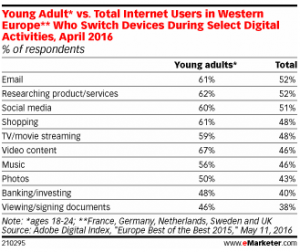 If you’re investing in a website for your company, there’s a good chance that you want to use it to attract the attention of more potential customers.
If you’re investing in a website for your company, there’s a good chance that you want to use it to attract the attention of more potential customers.
However, ensuring that your site can be found easily on the web is a complicated science. One of the most important factors is SEO — or search engine optimization — which can determine where your website appears in search engine results.
I’ve written before about how search engine rankings themselves are worthless, and that you should be paying attention to how your website is optimized for conversion if you want to get business from your website.
While rankings aren’t as important as what happens after a potential customer finds your website, showing up in search engines is incredibly important. Showing up for the most relevant searches with high buying intent is difficult.
That’s because there are tons of factors that play into a site’s SEO. In fact, Google has a whole secret algorithm to calculate it (but you knew that).
What you may not be as familiar with is that one important factor that many businesses overlook is the site’s actual development. These five SEO-focused web development tips will help your website get the notice it deserves.
1. Build a Mobile Responsive Website
I bet you use your mobile phone or tablet to view websites as much as you view websites on desktop or laptop computers. Everyone does. It’s a trend that’s hard to dispute. Just look at your Google Analytics to find out.
Today, many people are shifting their Internet use from desktop computers to mobile devices (like a tablet or smartphone). So, if you want all of your potential customers to be able see and use your website no matter what device they’re on, you need to design it responsively.
Responsive design uses technology that can detect what size screen and device a page is being viewed on, then present that page in the way that looks and functions best for that specific on-screen environment.
If you’re familiar with web development, you know that happens with media queries in your CSS file. If you’re not familiar, then send this article to your IT staff or development partner.
Responsive design can boost SEO because it helps lower your bounce rate and because Google takes into account “mobile-friendliness” when calculating a site’s SEO score, especially if the search occurs on a mobile device.
2. Keep Pages as Small as Possible
Images make a website look great, but put too many on the page or don’t reduce their file size and they can also cause a page to load slowly, which detracts from its SEO score.
A good company website balances the need for good, high-quality images with good typography and uses words rather than text in graphics when possible.
Ensure that your image files are as small as possible so that your page loads quickly. One web development tip for this is to resize images before uploading them to your website. Some content management systems resize an image by changing the height and width dimensions in HTML, but they actually are loading the large original image. This is slowing down your website for visitors but also counting against your load times for SEO.
3. Enable Caching
Another way to help your page’s load time is to allow for page caching. When your page is cached, it is stored on a visitor’s browser as a static, HTML version of your site.
This means that when a visitor returns to your site, they don’t have to reload your entire page. When developing your site, you can designate whether the page can be cached, who it can be cached by, and how long it can be stored.
It’s also a good idea to enable template caching and query caching for content management systems to speed up your website. Why pay special attention to load time and these technical aspects of your website? A slow website can cost you search rankings, but can also cost you leads.
4. Integrate Social Media Sharing on Blog, News, Press Releases and Downloadable Resources
Having your website shared on social media is a great way to boost its SEO. Make it easy for people to share your content on their social media profiles by including sharing buttons or toolbars. This will allow them to directly place a link to your page somewhere all of their followers can see it, with only the simple click of the button. This is also a great chance for you to take advantage of some free marketing!
On note of caution. Social media icons don’t belong at the top of every page on your website – they belong at the bottom. On specific pages, social sharing buttons need to be small and unobtrusive, but embedded in the content of your page.
5. Strive for Better Usability
Good SEO isn’t just about keywords. You have to provide a good experience to customers who visit your website. Is your page relevant to their web search? Does it match their expectations?
Usability really brings into play several things that you should pay attention to:
- Content – is your company website a resource to potential customers?
- Design – is your website well designed and easy to navigate?
- Development – does your website load in under 2 seconds? Is it properly browser-tested?
- Responsive web design – is your website readable on a mobile phone?
One metric that you should measure on your high-impact pages is bounce rate. A high bounce rate over 50% will let you know that you need to make usability improvements to a page, because people are visiting and leaving.
A company website can serve many purposes, but one of the most important is to help you drum up more business. By developing with SEO in mind, you can help ensure that your site is a tool for generating new leads and converting more sales.
Digital & Social Articles on Business 2 Community
(63)






